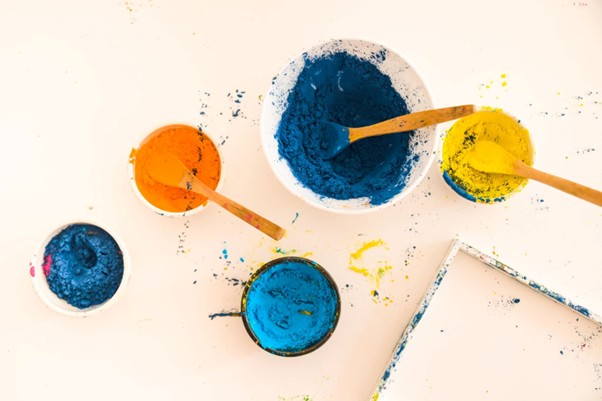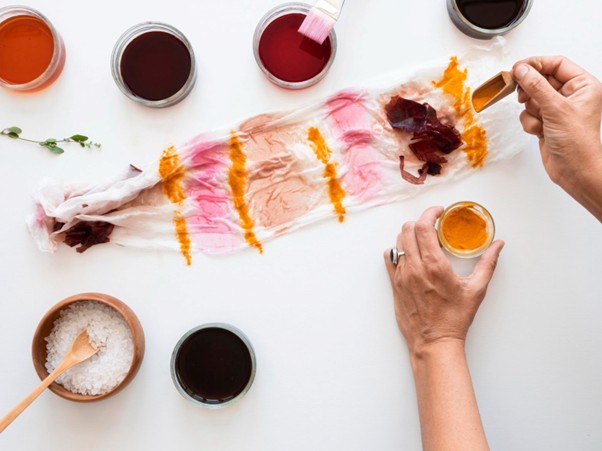
- By tanmaygoyal56
- January 6, 2025
- No Comments
Basic Dyes
Basic Dyes
Synthetic cationic (positively charged) dyes are called basic dyes, and they are mostly employed to color materials having anionic (negatively charged) characteristics. Their great tinctorial strength and vivid, brilliant colors are well-known, although their colorfastness is limited.
(Basic Dyes Manufacturers in India)
Important Features
Cationic Characteristics:
Negatively charged surfaces or Fibers form strong bonds with positively charged dye molecules.
Bright Colours:
Create vivid, powerful Colors Cellulose fibers, such as cotton, must be modified or treated with mordants to make them perfect for applications that call for eye-catching hues. Limited Fibre Compatibility: Ideal for leather, wool, silk, acrylic, and other fabrics. Cellulose fibers, such as cotton, must be modified or treated with mordants to make them perfect for applications that call for eye-catching hues.
Water Solubility:
Most basic Colors are easily applied since they dissolve in water. Inadequate Colorfastness: They are easily faded by light, washing, and other environmental factors.
Typical Applications:
Particularly good for synthetic materials like nylon and acrylic. Because of their low fastness, wool, and silk are occasionally utilized, but only after cautious handling.
Leather:
Because of its vivid hues, leather has a frequent application in dyeing.
Paper and Printing:
Applied to Coloring pages, printing inks, and packaging. Biological Stainings, such as the methylene blue Color, safranin, and crystal violet, are widely employed in histology and microscopy. Pen, marker, and printer inks are among the many types of inks available. Basic dye examples include Methylene Blue, a biological dye and stain used on paper and textiles. Paper dyeing and biological staining are two distinct applications for crystal violet.
Malachite Green:
A multipurpose dye for leather, textiles, and biological uses.
Auramine O:
Dyeing applications for Textiles, Paper, Leather, Acrylic Fibers, Wool, Silk and Plastics. Research and Diagnostics Commonly used in fluorescent microscopy and staining for cellular components in laboratory settings.
- Rhodamine B: A luminous dye used in scientific studies and textiles.
Benefits:
- Extremely vibrant and great Colors.
- High dye uptake with minimal quantities.
- Effective on synthetic and protein-based Fibers.
Dyeing Process:
- Preparation: Clean the Fiber or tangible to ensure even dye absorption.
- Application: Dissolve the dye in water and sustain a slightly acidic environment for optimal bonding.
- Fixation: Heat treatment or fixing chemicals may be used to improve dye retention.

Would you like more information on dyeing solutions or specific applications? (Basic Dyes in Textile)
Basic Dyes in Textiles Basic dyes are synthetic cationic dyes primarily used in the textile industry on dyeing substances that have an affinity for positively charged molecules. Because of their well-known vivid and spectacular Colors, they are perfect for certain uses, especially synthetic and constituted of protein Fibers.
- Characteristics of Basic Textile Dyes: High Tinctorial Strength: Intense Colors are produced in small amounts.
- Limited compatibility with Fiber Best for: Crystalline Fibers Ionic bonds give it a high affinity.
- Wool and Silk: Although they have a reduced fastness, protein Fibers can be Colored.
- Blended Fabrics: Acrylic can be done in mixes well such as acrylic and cotton or acrylic and wool.
- Vibrant Colours: Creates vivid, eye-catching shades that are difficult to achieve with other dyes.
- Low Fastness: Inadequate Defense against rubbing, light, and washing.
- Acrylic Fibre Dyeing: To get a bright and uniform coloration, acrylic Fibers are mostly dyed using basic dyes. Usually, dyeing is carried out in an environment with a pH of neutral to slightly acidic.
- Protein Fibres: Basic dyes can be used to color wool and silk, however treating the process carefully is necessary because of possible fastness problems. For efficient dye absorption, a mildly acidic bath is necessary.
- Blended Fabrics: Useful for Coloring only the compatible Fiber in blends such as acrylic-cotton or acrylic-wool.
- Specialty Uses: Accessories and decorative textiles with a preference for vivid hues. Banners, costumes, and other items when speed is not a top priority.
- Preparation: Wash the fabric well to get rid of any contaminants.
- Color Bath: Keep the pH of the water slightly acidic (around 4-6) while dissolving the basic Color.
- Dyeing: At the proper temperatures (usually between 50 and 60°C for acrylic), submerge the cloth and let the dye adhere to the Fiber.
- Fixation: Where appropriate, use treatments or mordant usage to enhance fastness characteristics.

Simple Textile Dye Examples
- Rhodamine B: Vibrant red and pink hues.
Crystal Violet is a deep purple Color.
- Methylene Blue: Shades of deep blue.
Bright green hues are known as malachite green.
- Basic Yellow 28: Well-liked for vivid yellow tones.
Auramine O: Auramine O is a synthetic, yellow cationic dye mainly used in histology and microbiology for fluorescent staining. It is widely used in research laboratories and various industrial applications, including as a dye for textiles and paper, leather.
